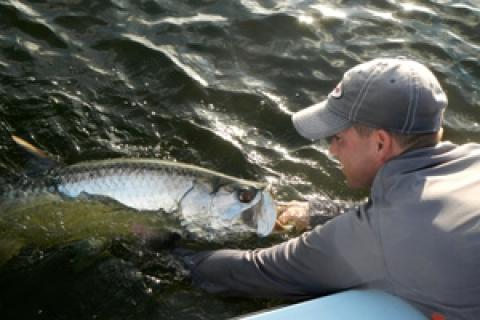
 My release/hookup-to-strike ratio remains fairly high, compared to the fabled averages. This is based on fishing for the Silver King since the 60s and my angling for them continues at full bore. It's also a point of view based on integrating the latest technological developments in rods, reels, lines, lures and baits and comparing their efficacy to what the status quo and tradition has already offered.
My release/hookup-to-strike ratio remains fairly high, compared to the fabled averages. This is based on fishing for the Silver King since the 60s and my angling for them continues at full bore. It's also a point of view based on integrating the latest technological developments in rods, reels, lines, lures and baits and comparing their efficacy to what the status quo and tradition has already offered.
In order to increase your own personal release/hookup to strike ratio, you might want to:
Reconsider the constant use of braided line and go back to monofilament when it comes to head-shaking and jumping fish like tarpon. Yes, braid transmits more energy than mono on the strike to sink the hook, but its unstretching quality slingshots the hook (more than mono) back at the angler on the jump. This is especially so when the hook is attached to jigs and plugs that give even more weight and hook-throwing leverage to head thrashing and leaping tarpon. I reserve the use of braid for fishing snook near mangroves where maximum pressure and abrasion resistance are paramount line abilities. A compromise might be cofilament, but I vote for mono because the stretch actually saves many thrown hooks.
One exception for tarpon is when guides employ the use of small live baits, circle hooks and braided line for newcomer customers. Guides love braid and circle hooks for their newbie customers who simply need to reel down on a strike. Indeed, with this setup the rod can hook tarpon while left in the gunwale rod holder, but that's a dull business of starting the battle.
Give up even relatively heavy artificials, as they give tarpon way too much leveraged weight to throw out of their mouths on the jump. Decline the use of multi-hooked plugs. There is no reason to use any plug with treble hooks — 6 or 9 hook points endangers the tarpon's eye for short-lived but potentially mauling moments. Use a fly as an ideal template when constructing your artificial offerings, be they bucktail, feathers or modern plastics. Consider building breakaway weights on your swimming plastics wherever you are.
Lighten your leader as the fish get smaller. While I use 60- to 80-pound fluorocarbon leaders on medium to large tarpon, I drop down to 30-pound fluorocarbon in 6-foot lengths tied to a doubled 12-pound line for fish 40 pounds or less. The long leader arrangement helps to deal with chafing against the length of the fish's body while I use maximum pressure.
As an in-close fighting tactic, do not forget to use the "Down and Dirty"— try to tire and upend your tarpon as quickly as you can so the fish can survive. Go for the quick knockout for the sake of the fish. Believe it or not, tarpon can be more fragile than redfish when the battle is over.
- 6112 views

